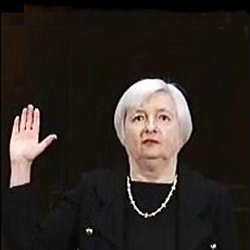By Pam Martens and Russ Martens: September 8, 2015
When the revision to second quarter Gross Domestic Product was released by the Commerce Department on August 27, boosting GDP to 3.7 percent, it had a lot of people scratching their heads. Consumer Metrics Institute came right out with it, writing: “Once again we wonder how much we should trust numbers that bounce all over the place from revision to revision. One might expect better from a huge (and expensive) bureaucracy operating in the 21st century. Among major economies, only the Chinese numbers are more suspect.” Ouch.
Jeffrey Sparshott and Jon Hilsenrath, economic writers at the Wall Street Journal, were more subtle in their assessment, suggesting that “How fast the economy grew depends on how you measure it. An alternative measure, gross domestic income, advanced at a much slower 0.6% pace last quarter. Both GDP and GDI measure overall economic activity but tap different source data: GDP uses expenditures and GDI uses incomes. While they should move in the same direction, there are often short-term discrepancies.”
The difference between 0.6 percent growth and 3.7 percent growth might be viewed by some as more than a “discrepancy.” Not to put too fine a point on it, but 3.7 is more than 6 times the rate of growth as measured by Gross Domestic Income for the second quarter.
There is also the concern that this exuberant 3.7 percent growth in GDP came when both earnings and revenues on the Standard and Poor’s 500 (the largest companies in the U.S.) contracted. On August 25, Bloomberg Business wrote that “Profits reported by S&P 500 companies in the second quarter fell 2 percent from a year ago and are projected to slip 5.5 percent in the current period.” (FactSet says the decline was 0.7 percent in the second quarter.) Of equal alarm, revenue growth fell by 3.4 percent, according to S&P Capital IQ.
If the largest corporations in the U.S. are experiencing a slowdown why isn’t the overall U.S. economy?
According to the second quarter data released by the Commerce Department on August 27, exports contributed .65 to the percent change. (See Table 2 here.) That’s another oddity. Based on 2014 exports, Canada was the largest export market for the U.S. Its growth contracted in the second quarter. Both Mexico and China, our two other largest export markets, are showing slowing growth.
Also adding to the boost in second quarter GDP was “local and state government consumption expenditures and gross investment.” That clocked in at 0.46. That reading must be contrasted against the prior 15 quarters when that figure was a negative drag in 10 of those quarters and contributed just .116 on average in the five quarters it registered positive.
Having an accurate assessment of how strongly the U.S. economy is growing is critical to decision making by businesses and keeping America competitive. If businesses boost production on the basis of a more robust consumer than actually exists or in anticipation of an upturn in export demand that doesn’t materialize, profits could take a hit as unsold goods require dumping at fire sale prices.
Of equal concern, the Federal Reserve will make a decision next week on whether or not to hike short term interest rates based on whether the economy is strong enough to withstand what is effectively a credit tightening by the Fed.
This is not at all the best time to have market economists scratching their heads about peculiarities in the GDP numbers.


